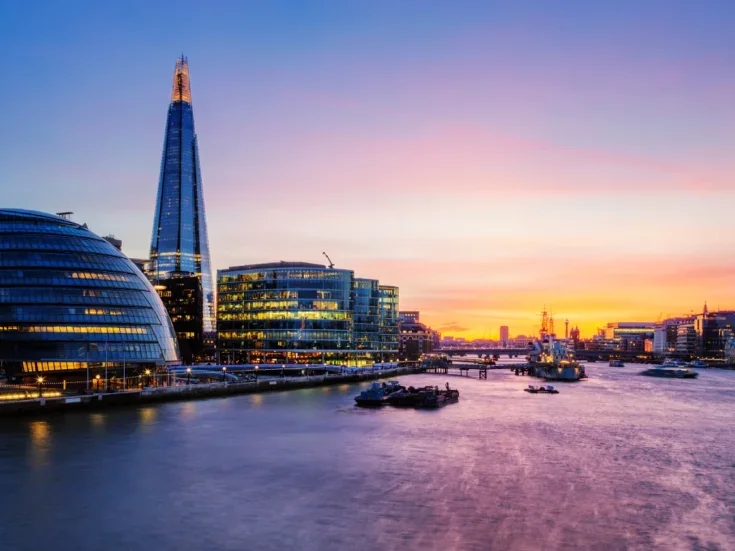I’m on the edge. Beneath me is a 540 foot drop. It’s all a blur, but I can just about make out people staring, pointing and taking photos
I’m on the edge. Beneath me is a 540 foot drop. It’s all a blur, but I can just about make out people staring, pointing and taking photos, which is no surprise given that I’m about to jump off the fourth highest building in the City.
Thankfully, dear reader, this is not a suicide note. Rather, it’s a charity abseil for London’s Air Ambulance; an act highly out-of-character as heights are my biggest fear.
Why am I doing this? Why am I putting myself in the epicentre of mental hell?
Ultimately, it’s the triumph of reason. My acrophobia has been present since childhood, when I can remember my father making me peer over a perilous cliff in Madeira, and it’s still there, manifesting itself most recently on a jolly to Snowdon’s summit. Yet the wobbly knees and noxious nausea are attributable to nothing; I’ve never had a fall, never even broken a bone.
Therefore, my fear illustrates the absurdity of the mind. How it can make unreality reality. So when presented with the opportunity to abseil the Broadgate Tower, I couldn’t resist as it was the perfect forum to demonstrate reason over rambling.

To do so, however, I knew I needed a game changer. So I gave myself a crash course in cognitive behavioural therapy, a psychotherapeutic approach developed in the 1960s by Aaron Beck and Albert Ellis which condenses into the simple thought, ‘your thinking affects your feelings which affect your behaviour’.
How? Because your body releases chemicals to match your mood. So stand on the top of the skyscraper’s skyscraper thinking “Ahhhhhh!” and you’ll feel awful. But do as I did and think it’s fine, I’m totally safe, and lo-and-behold you’ll be calm and collected.
In practice, that wasn’t entirely true. Half way into my fifteen minute descent, the winds picked up and swung me twenty feet across the building and ten feet out. I turned into a human pinball, spinning on my rope and repeatedly bashing into the glass.
In the midst, my newfound techniques were tested. But the situation was assuaged by the presence of my instructor whom I looped my legs around in a manoeuvre worthy of the karma sutra (he wasn’t amused).
And so, on the whole, CBT rose in my estimation with every slide down the rope. I surprised myself with my composure, and what it illustrated was the power of self control.
60,000 thoughts go through our minds every day and yet, as James Borg’s Mind Power explains, none of us spare a thought for our thinking process. Considering the mind has a natural slant towards pessimism, that’s criminal.
‘If we had a friend who spent much of the time criticising us then we wouldn’t put up with it,’ says Borg, ‘yet we’ll listen to the repetitive self limiting and critical statements of our self-talk.’

To overcome it, he recommends visualising your worst fear. That sounds like the ultimate cliché, but science proves his point.
Imagining yourself abseiling, for example, will create neural pathways of experience even though you haven’t actually lived the reality. That’ll calm you down when you’re doing it for real, and, moreover, have a self-reinforcing effect going forward as the brain strengthens the neuron connections you use and weakens the ones that you don’t.
Thus, as Borg summarises, ‘You are today where the thoughts of yesterday have brought you, and you will be tomorrow where the thoughts of today have taken you.’
With that and the support of London’s Air Ambulance, I’m a happier man.
LONDON’S AIR AMBULANCE
London’s Air Ambulance is, surprisingly, not fully funded by the NHS. Despite its vital role in London life, transporting medics to injured patients at extra-fast speed, £1.6 million of its operating costs come from private donations every year.
In 2012, there are as many charities in London as HNWs in Knightsbridge, so it’s fair to question what differentiates the organisation.
‘When tragic accidents happen, our doctors and paramedics perform life saving operations in the street,‘ says David Oakley, the charity‘s director. ‘We operate in an international hub, with people from all over the world visiting the capital, and yet we are there for everyone 24/7 regardless.‘
As an example, one of the 15 June abseilers was Emma McEachan, the human resources manager at Addison Lee, who was involved in a freak accident when her motorcycle slid into an oncoming Ford Fiesta last Christmas.
She sustained severe leg fractures and chest injuries so London’s Air Ambulance was summoned. Flying from Whitechapel to Bromley in eight minutes, they anaesthetised her on the spot and performed a thoracotomy, allowing her lungs to reinflate, at the same time as splinting her leg and pelvis.
Emma says, ‘I had not heard much about London’s Air Ambulance prior to my accident, but now I feel forever endebted to the essential service. I never thought it’d be possible to abseil a building the height of 36 double-decker buses, but with the help of London’s Air Ambulance, that’s happened.’
For more about how you can donate your time or money, visit www.londonsairambulance.co.uk







